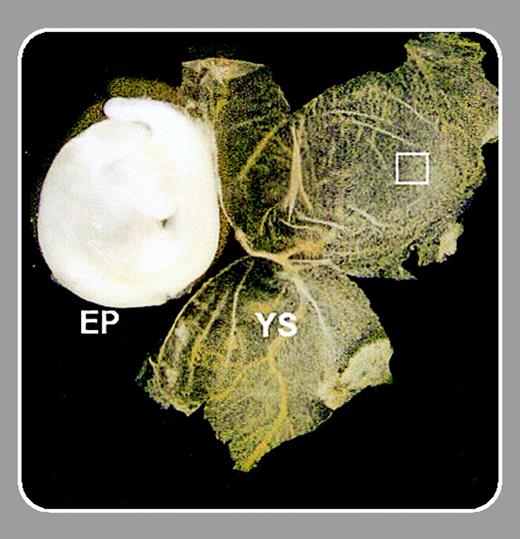Although it is generally accepted that signals from the hematopoietic microenvironment regulate both the size and activity of the hematopoietic stem cell (HSC) pool, the cell types responsible and the cytokines they produce are incompletely understood. The close physical and temporal association between blood vessels and hematopoietic cells during early development suggests the existence of a common progenitor cell or hemangioblast. Accumulating evidence now indicates that embryonic vascular endothelium generates signals that support the growth of HSCs in vitro. Further understanding of what appears to be a close functional relationship between the endothelium and HSCs has been hampered by 2 problems. Separation of embryonic endothelial cells and hematopoietic progenitors has been problematic because of the considerable overlap in gene expression profiles found in these cell populations. Second, transplantation of embryonic HSCs into adult recipients usually fails to produce long-term multilineage hematopoietic engraftment.
Using an in vitro stem cell expansion approach in combination with an adult transplantation model, Li and colleagues (page 4345) have overcome these hurdles. Their search for molecular markers that distinguish between endothelial and hematopoietic activity reveals that a subset of cells expressing Tie-2 and Flk-1 but not CD41 can be isolated from the yolk sac and para-aortic splanchnopleura (P-Sp) on day 9.5 of gestation. This population of cells is devoid of hematopoietic activity and exhibits functional characteristics of endothelial cells, including capillary tube formation and the uptake of low-density lipoprotein. Cocultures of these endothelial cells with phenotypically defined adult HSCs (c-kit+Sca-1+lineage- [KSL] cells) produced a 10-fold increase in hematopoietic progenitors. When the stem cell activity of cocultured KSL cells was evaluated in vivo using a competitive repopulating assay, Tie-2+Flk-1+CD41- cells derived from the yolk sac produced a 2.8-fold increase in repopulating activity, while P-Sp-derived Tie-2+Flk-1+CD41- cells showed a 9.8-fold increase.
By demonstrating an increase in repopulating activity, the authors provide direct evidence for the functional expansion of HSCs by signals generated from the embryonic endothelium. This approach provides an assay system that could be used to screen potential HSC growth factors. Importantly, these findings also suggest that the complex interactions between endothelial cells and HSCs first observed in early development persist into adult life. This study should stimulate further investigation into the links between endothelial cells and the hematopoietic stem/progenitor cell compartment.


